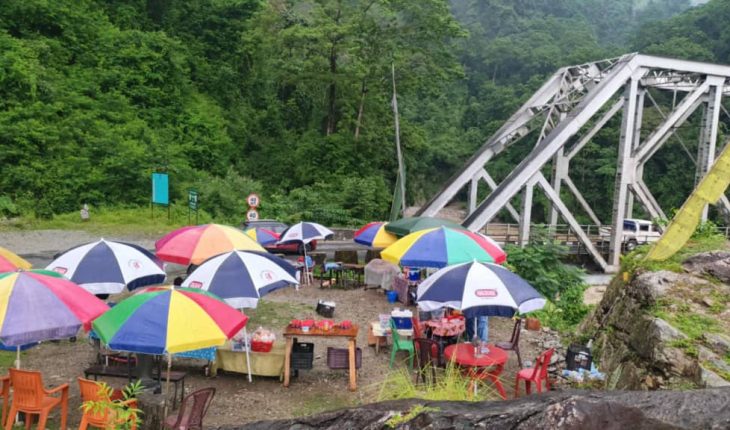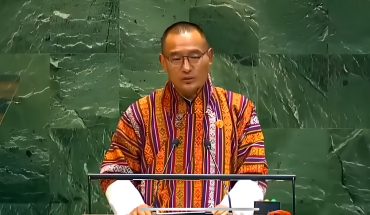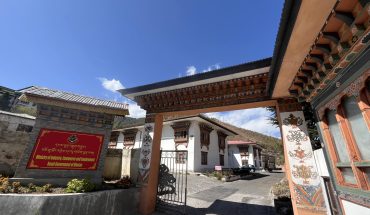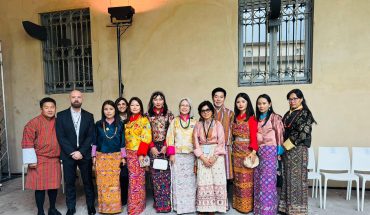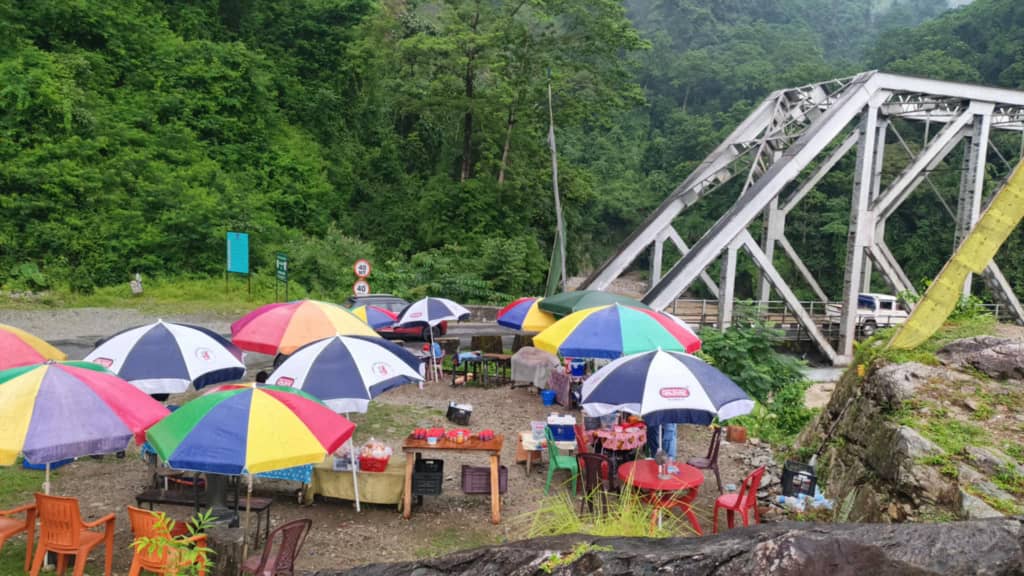
The Serzhong bridge in Gelephu is all poised to transform the communities connected via it
TENZIN LHAKI | Gelephu
What was once a quiet river crossing has now become a vibrant weekend destination. The Serzhong Bridge area in Gelephu has transformed into a bustling market, drawing hundreds of regional tourists every week.
For local stall owners, the market has evolved into a vital economic lifeline, offering food, souvenirs, and traditional experiences to visitors.
From just a handful of stalls years ago, the site has now grown into a prominent weekend hub.
Nine stall owners from Serzhong and Gelephu currently operate businesses in the area, offering traditional Bhutanese cuisine, homemade pickles, locally made souvenirs, and increasingly, rental services for traditional attire that cost Nu 100.
Among the most popular attractions is the opportunity to rent traditional clothes for quick photo sessions—an idea pioneered by Leela Ghalley a first stall owner.
“We usually see more tourists on Sundays and Saturdays than on weekdays,” said Ani Dekar, another vendor from Serzhong Gewog. “During holidays and special occasions, the crowd is even bigger and we can earn up to Nu 3,000 to Nu 10,000.”
However, despite the growing popularity of the market, vendors face numerous challenges due to the lack of basic infrastructure.
The area currently lacks proper shelters, toilets, water and adequate parking facilities, causing inconvenience to both vendors and visitors.
“In summer, it’s very difficult without a proper market space. Umbrellas don’t protect much from rain and sun. We would be grateful if a small shelter or space could be arranged for us,” said Aum Choday a vendor.
The absence of public toilets and designated parking areas has also caused concern.
“We don’t have toilet facilities or enough parking for the tourists’ vehicles. The space for our stalls is also very small, and it’s becoming overcrowded as more stall owners join,” said Dorji Pemo, another stall operator from Serzhong Gewog.
“If the visitors are allowed to go till Sershong Lhakhang to pray and sightseeing, they would be very happy and they might encourage more visitors to visit our places” added Ani Daker.
As of now, visitors are only allowed till the bridge which dishearten the visitors as well as the vendors.
Authorities acknowledge the increasing strain on the area due to its popularity.
The Serzhong Gewog Administration confirmed that several proposals have been submitted by both vendors and private groups to formalize the business environment and construct permanent structures.
“We have received several proposals from vendors and private groups to formalize the space and build basic infrastructure. However, since the land belongs to the state, we’ve referred the matter to the district level,” said an official from the Gewog Administration.
Land ownership also remains a major hurdle in implementing permanent solutions.
Until the district administration grants clearance for development, the vendors will have to continue to operate under makeshift conditions.
The administration stated that plans are in place to improve facilities, including building toilets and market sheds, once land use permissions are finalized.
Despite the obstacles, the market continues to attract a large number of regional tourists. Visitors are drawn by the authentic cultural experience and the lively atmosphere.
“The atmosphere is lively. We love the local food, the traditional clothes, and the friendly vendors. It feels like a festival every weekend,” said one visitor.
However, tourists have also reported minor inconveniences due to the lack of facilities.
“Parking is a bit of a problem. Also, there are no proper toilet facilities. But overall, the experience is enjoyable and worth coming back for,” said another regional tourist.
“It would be affordable if the government could revise the Sustainable Development Fee (SDF) amount for the regional tourist to gain more momentum” said one of the visitors.
Regional tourist has to pay SDF amount Nu 1200 for a duration of more than a day 24 hours while in Bhutan.
In the meantime, stall owners remain optimistic and are making plans to enhance the market experience with the resources they have. Some vendors hope to build toilets using their own funds once they receive approval, in an effort to improve the conditions for both sellers and visitors.
“I hope we can have a formal space with shelter and basic facilities,” said a vendor. “It would attract even more tourists and improve our income.”
While formal development remains pending, the Serzhong Bridge weekend market stands as a grassroots initiative powered by local entrepreneurship, cultural pride, and a growing regional tourism interest.
However, until authorities finalize decisions on land use and infrastructure, vendors and tourists alike will continue to navigate both the promise and the pressure of this emerging hotspot.

